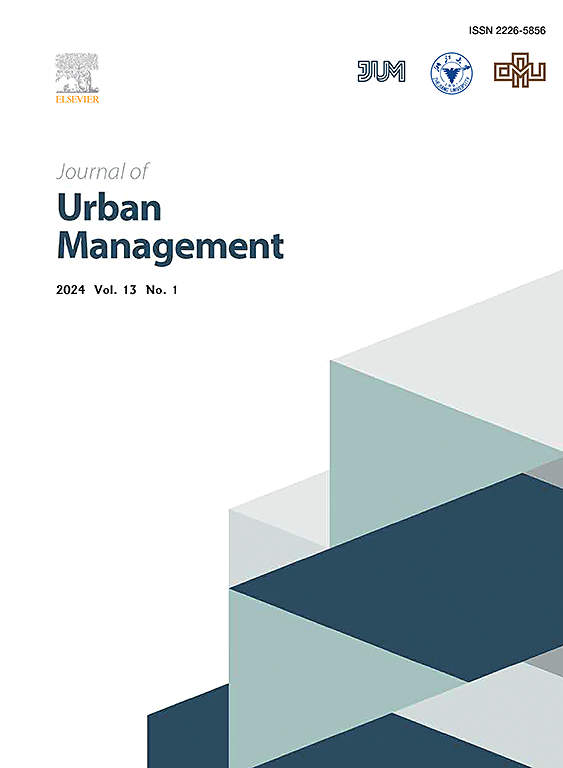公共厕所有多远,有多容易辨认?基于空间分析和深度学习的南京城市尺度研究
IF 5
2区 社会学
Q1 URBAN STUDIES
引用次数: 0
摘要
每个人都需要使用公厕,然而,尽管公厕在确保及时使用方面很重要,但公厕短缺和可用性有限仍然是一个全球性挑战。对公共厕所服务的传统评估往往忽视了实际的使用模式,只关注物理距离,忽视了在塑造用户体验方面的寻路便利性。本研究通过对中国南京全市公共厕所服务效率进行分析,强调可达性和寻路性,解决了这些差距。采用在线路线规划算法生成5分钟、10分钟和15分钟集水区地图,量化公厕的空间覆盖范围。此外,深度学习技术被用于检测南京老城区街景中的公共厕所标志,以评估寻路便利性。结果表明,南京平均厕所密度为0.91个/ km2, 10分钟集水区面积占城市空间的27.47%,人口的71.36%,公共服务兴趣点的82.00%。然而,在旧城区,只有38.32%的公厕安装了标识,这表明在分布上存在差异,覆盖范围存在差距,某些地区标识不足。为了解决这些问题,南京可以扩大公共厕所设施,扩大10分钟的集水区,并鼓励更多企业向公众开放厕所。此外,增加标识,包括社会公厕的标识,可以改善寻路,从而提高整个城市公厕的服务效率。本研究为城市规划者和政策制定者改善公共厕所基础设施提供了可操作的见解。此外,该方法为评估全球城市的城市基础设施提供了一个可扩展的框架。本文章由计算机程序翻译,如有差异,请以英文原文为准。
How far and discernible are public toilets? A city-scale study using spatial analytics and deep learning in Nanjing, China
Everyone needs access to public toilets, yet despite their importance in ensuring timely use, the shortage and limited availability of public toilets remain a global challenge. Conventional assessments of public toilet services often overlook actual usage patterns and focus solely on physical distance, neglecting wayfinding convenience in shaping user experience. This study addresses these gaps by conducting a city-wide analysis of public toilet service efficiency in Nanjing, China, emphasizing both accessibility and wayfinding. An online route planning algorithm was employed to generate a 5-, 10-, and 15-min catchment area map, quantifying the spatial coverage of public toilets. Additionally, deep learning techniques were utilized to detect public toilet signage in Nanjing's old urban area street views to assess wayfinding convenience. The results indicate an average toilet density of 0.91 units per km2, with 10-min catchment areas covering 27.47% of the city space, 71.36% of the population, and 82.00% of public service points of interest in Nanjing. However, signage is present at only 38.32% of public toilets within the old urban area, revealing disparities in distribution, coverage gaps, and inadequate signage in certain areas. To address these gaps, Nanjing could expand public toilet facilities to enlarge the 10-min catchment areas and encourage more businesses to open their toilets to the public. Additionally, increasing signage, including for social public toilets, could improve wayfinding and thus enhance the service efficiency of public toilets across the city. This study offers actionable insights for urban planners and policymakers to improve public toilet infrastructure. Moreover, the methodology provides a scalable framework for evaluating urban infrastructure in cities worldwide.
求助全文
通过发布文献求助,成功后即可免费获取论文全文。
去求助
来源期刊

Journal of Urban Management
URBAN STUDIES-
CiteScore
9.50
自引率
4.90%
发文量
45
审稿时长
65 days
期刊介绍:
Journal of Urban Management (JUM) is the Official Journal of Zhejiang University and the Chinese Association of Urban Management, an international, peer-reviewed open access journal covering planning, administering, regulating, and governing urban complexity.
JUM has its two-fold aims set to integrate the studies across fields in urban planning and management, as well as to provide a more holistic perspective on problem solving.
1) Explore innovative management skills for taming thorny problems that arise with global urbanization
2) Provide a platform to deal with urban affairs whose solutions must be looked at from an interdisciplinary perspective.
 求助内容:
求助内容: 应助结果提醒方式:
应助结果提醒方式:


